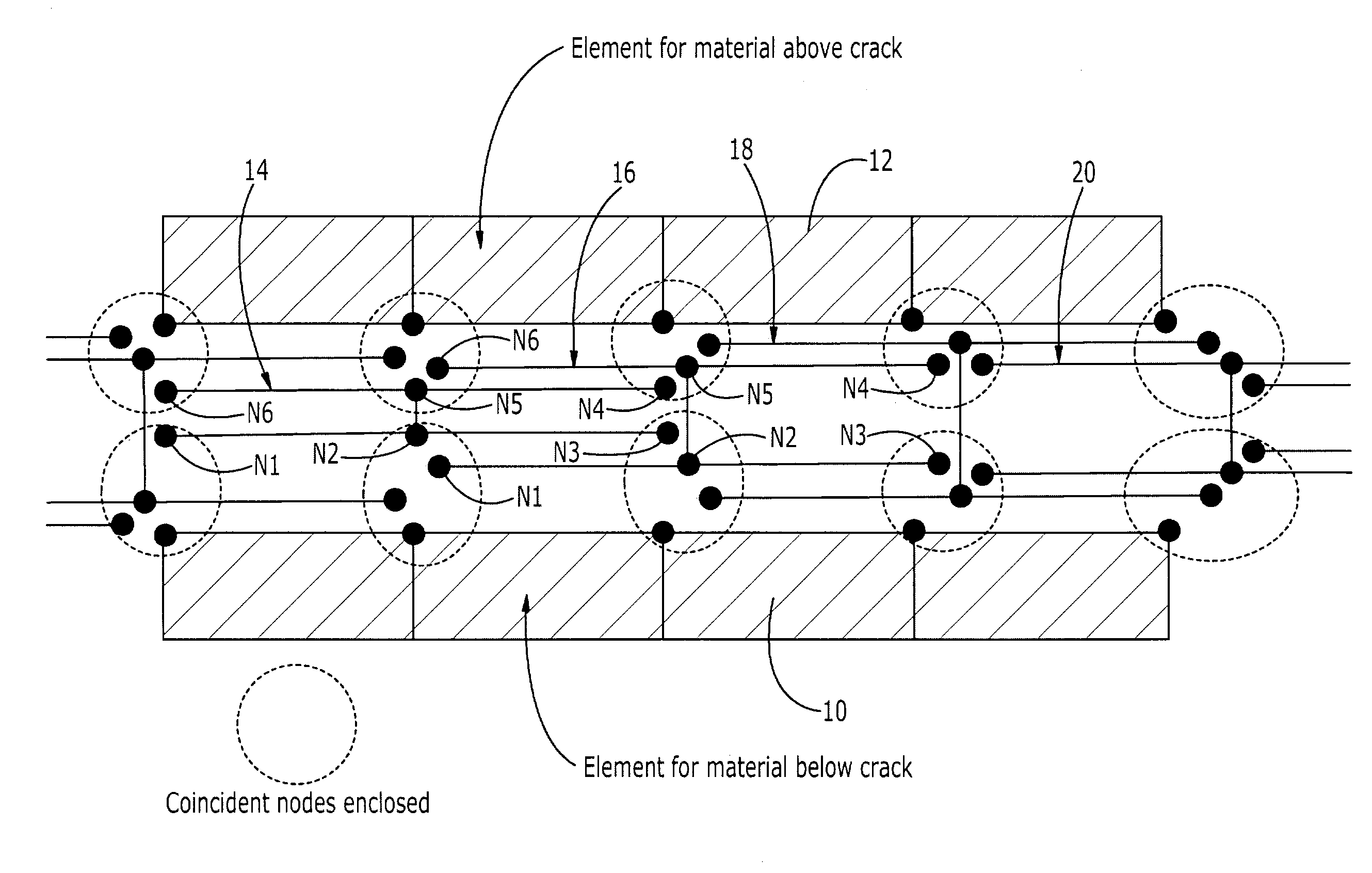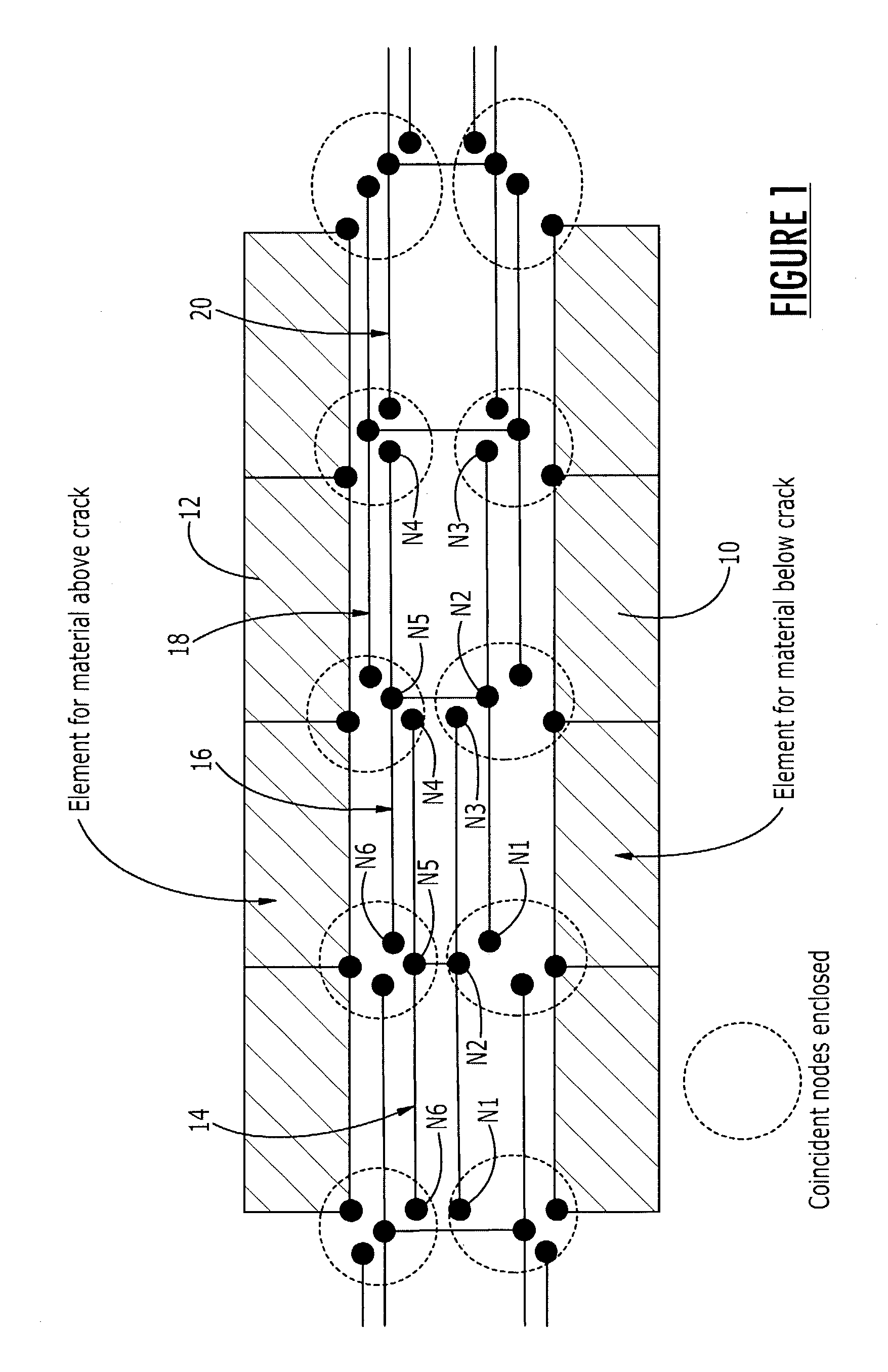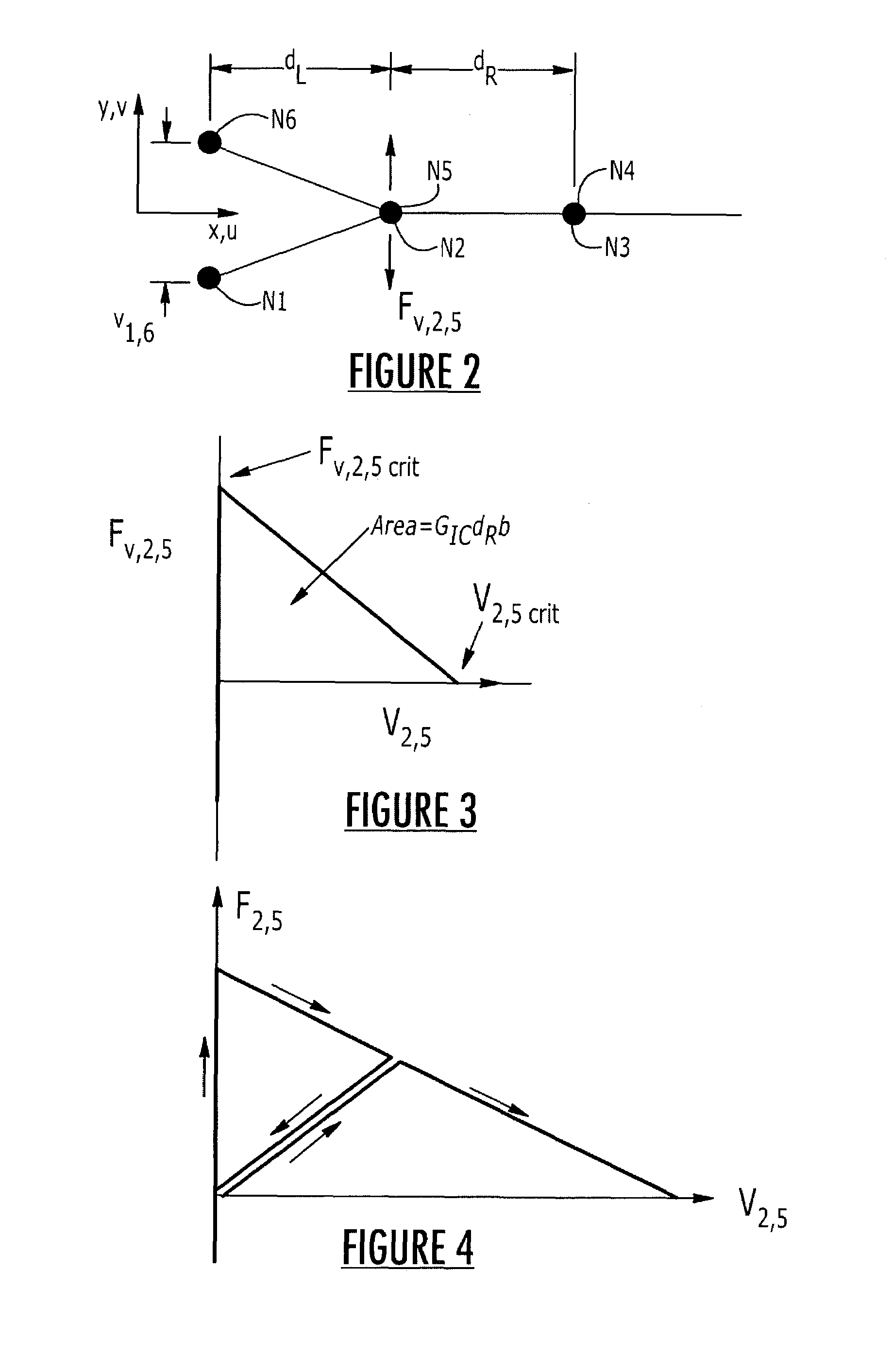Method and interface elements for finite-element fracture analysis
a finite element and fracture analysis technology, applied in the field offinite element structural analysis methods, can solve the problems of inability to predict the initiation or propagation of cracks in materials using existing finite element computer modeling techniques, hampered prediction of crack initiation and propagation, and limitations of techniques
- Summary
- Abstract
- Description
- Claims
- Application Information
AI Technical Summary
Benefits of technology
Problems solved by technology
Method used
Image
Examples
Embodiment Construction
[0036]The present invention now will be described more fully hereinafter with reference to the accompanying drawings, in which preferred embodiments of the invention are shown. This invention may, however, be embodied in many different forms and should not be construed as limited to the embodiments set forth herein; rather, these embodiments are provided so that this disclosure will be thorough and complete, and will fully convey the scope of the invention to those skilled in the art. Like numbers refer to like elements throughout.
[0037]The invention relates to a method for predicting the behavior of a crack in a structure (e.g., a composite member, a metal member, etc.) subjected to external loading that may cause the crack to grow in length, such growth being referred to herein as “propagation” of the crack. The method of the invention is advantageously implemented within a finite element model (FEM) on a computer. Finite element modeling of structures is widely used for determini...
PUM
 Login to View More
Login to View More Abstract
Description
Claims
Application Information
 Login to View More
Login to View More - R&D
- Intellectual Property
- Life Sciences
- Materials
- Tech Scout
- Unparalleled Data Quality
- Higher Quality Content
- 60% Fewer Hallucinations
Browse by: Latest US Patents, China's latest patents, Technical Efficacy Thesaurus, Application Domain, Technology Topic, Popular Technical Reports.
© 2025 PatSnap. All rights reserved.Legal|Privacy policy|Modern Slavery Act Transparency Statement|Sitemap|About US| Contact US: help@patsnap.com



